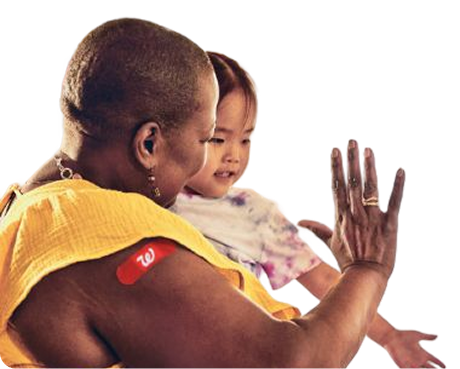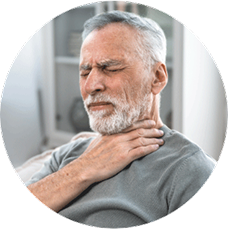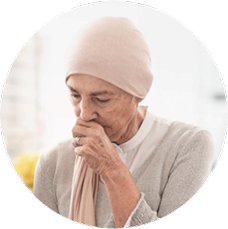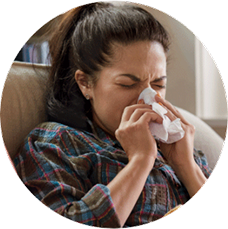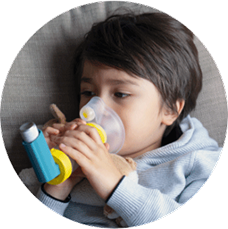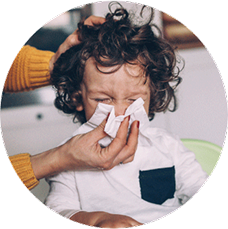Respiratory Illness Index | Walgreens
Respiratory Illness Index
Expert care and advice close to home
We’re here to help you stay well or feel better
Stay up-to-date on vaccines
Vaccines are your first line of defense during respiratory illness season
Over-the-counter symptom relief
Feel better faster with trusted options for symptom management
Shop by symptom
OTC relief for coughs, fevers and more
Frequently Asked Questions
-
Flu viruses and the virus that causes COVID-19 are present in respiratory droplets that can spread when an infected person coughs, sneezes or talks. Spread is more likely when people are in close contact with one another. Less often, people may become infected when they touch a surface that contains the virus and then touch their mouths, noses or possibly eyes. People who are infected with flu or COVID-19 can be contagious for days before they develop symptoms. In general, people with COVID-19 may take longer to show symptoms, and they may be contagious for a longer period of time compared to those with flu.
-
Flu vaccination can help prevent flu-related illnesses, healthcare provider visits, and hospitalizations. Everyone age 6 months and older should get a flu shot each year.
COVID-19 vaccination can help prevent severe illness, hospitalization and death due to the illness. The 2025-26 COVID-19 vaccine is available now for eligible patients in many states. State-, age- and health-related restrictions may apply.
There are also everyday actions you can take to reduce your risk of getting sick with COVID-19 or flu:
- Wash your hands often. Wash your hands with soap and water for at least 20 seconds after coughing, sneezing, blowing your nose and being in public settings. When soap and water aren't available, use a hand sanitizer that contains at least 60% alcohol.
- Do not touch your mouth, nose or eyes with unwashed hands.
- Keep your distance from others, especially those who are sick. If someone in your home is ill, try to keep your distance from them, too.
- If you have either illness, it's important to try to avoid spreading it to others. Stay home when you're sick, except to get medical care. Some people, especially those who have an increased risk for COVID-19, may choose to wear a mask in public to help provide greater protection.
-
Flu and COVID-19 each cause a variety of symptoms ranging from mild to severe. In some cases, patients may be asymptomatic, meaning they experience no symptoms. Because the viruses cause many of the same symptoms, the only way to confirm which virus is causing your symptoms is to get tested.
Flu symptoms tend to develop within one to four days of exposure to the virus. With COVID-19, symptoms appear within two to 14 days after the virus enters the body, typically around five days. Symptoms of both illnesses include:
- Fever
- Chills
- Headache
- Body aches and muscle pains
- Fatigue
- Shortness of breath or trouble breathing
- Cough
- Sore throat
- Runny or stuffy nose
- Vomiting or diarrhea
- Loss of or a change in taste or smell (more common with COVID-19)
The following severe symptoms should be considered an emergency. If you have any of these symptoms, or other symptoms that are concerning to you, seek medical help right away:
Severe flu symptoms:- Trouble breathing or shortness of breath
- Constant pain or pressure in the chest or abdomen
- Persistent dizziness, confusion or inability to wake up
- Seizures
- Not urinating
- Severe muscle pain
- Severe weakness or unsteadiness
- Fever or cough that improves but then comes back or gets worse
- Worsening of chronic health conditions
Severe COVID-19 symptoms:- Trouble breathing
- Constant pain or pressure in the chest
- New confusion
- Inability to wake up or stay awake
- Pale, gray or bluish lips, skin or nail beds
In children, emergency symptoms can also include fast breathing, bluish lips or face, ribs pulling in with each breath, chest pain, not urinating for eight or more hours, dry mouth, no tears when crying, loss of alertness or a fever over 104°F. In children younger than 12 weeks, any fever is an emergency.
-
Since both infections share many of the same symptoms, it may not be possible to know which illness you have without seeing your healthcare provider or getting tested. If you are experiencing symptoms, contact your healthcare provider, especially if you are at high risk for severe infection. They may examine or test you for flu or COVID-19. (Walgreens is offering flu testing and COVID-19 testing at select locations.) You can also purchase an over-the-counter COVID-19 and flu test.
-
Walgreens pharmacists nationwide can provide expert recommendations for over-the-counter symptom management and relief.
Prescription antiviral treatment may be an option for eligible patients. Prescription treatment must be started within 48 hours of symptom onset. In AR, CO, FL, ID, KS, KY, MI, MN, NE, UT, WA, and WI, Walgreens pharmacists may be able to prescribe antiviral treatment following an in-store test and clinical assessment.
Patients can also receive an assessment for prescription antiviral treatment from a doctor or nurse practitioner with Walgreens Virtual Healthcare in some states.
Prescription antiviral treatment may be an option for eligible patients. Prescription treatment must be started within five days of symptom onset. In AR, CO, FL, ID, KS, KY, MI, MN, NE, UT, WA, and WI, Walgreens pharmacists may be able to prescribe antiviral treatment following an in-store clinical assessment.
Patients can also receive an assessment for prescription antiviral treatment from a doctor or nurse practitioner with Walgreens Virtual Healthcare in some states.
-
Walgreens pharmacists nationwide can provide expert recommendations for over-the-counter symptom management and relief.
Prescription antiviral treatment may be an option for eligible patients. Prescription treatment must be started within five days of symptom onset. In AR, CO, FL, ID, KS, KY, MI, MN, NE, UT, WA, and WI, Walgreens pharmacists may be able to prescribe antiviral treatment following an in-store clinical assessment.
Patients can also receive an assessment for prescription antiviral treatment from a doctor or nurse practitioner with Walgreens Virtual Healthcare in some states.
